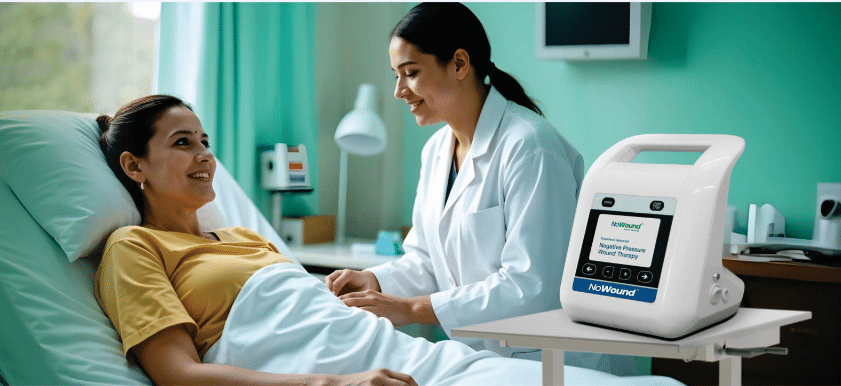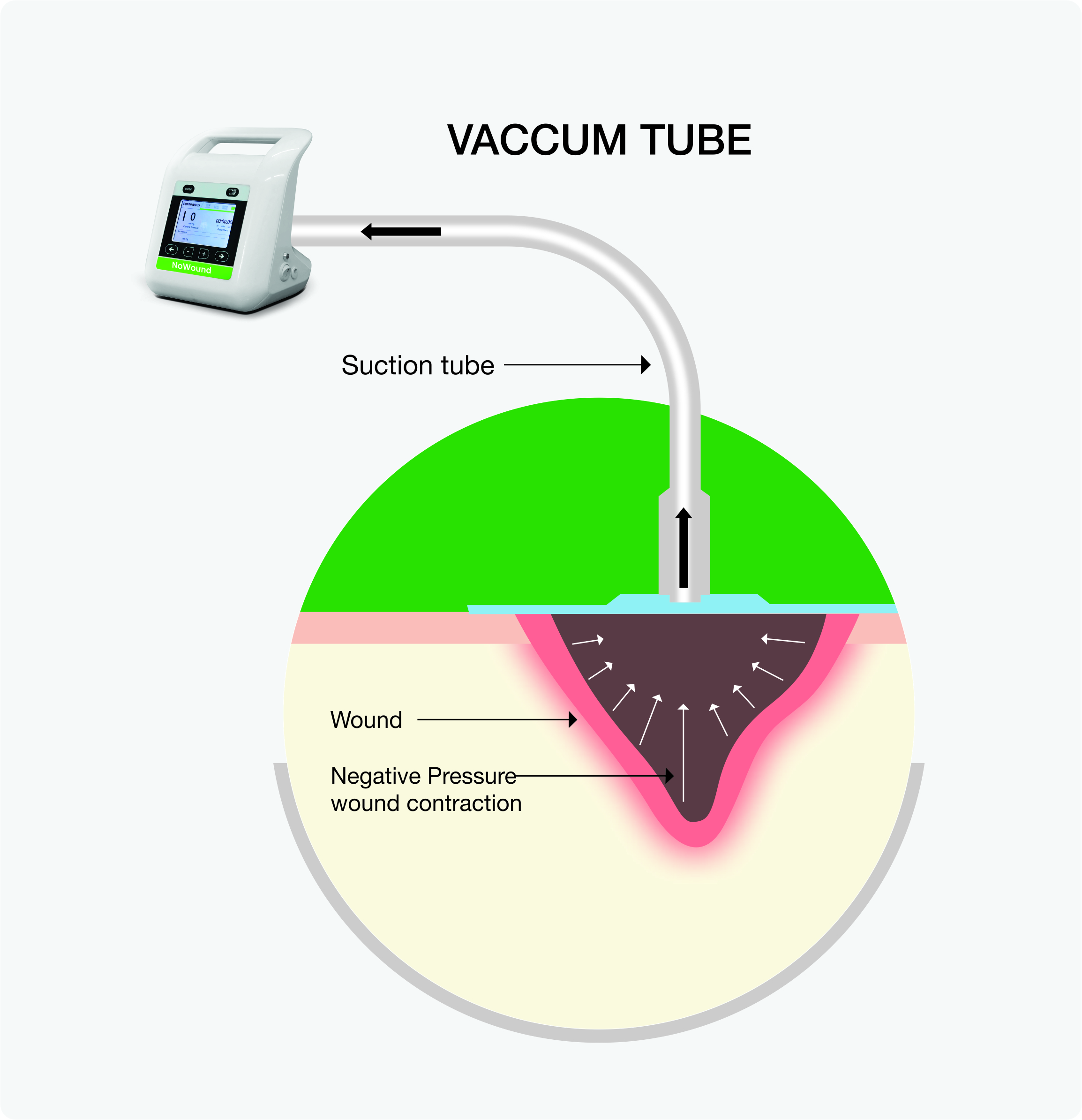
Acute wounds, such as surgical incisions, traumatic injuries, or burns, require immediate intervention to facilitate healing and prevent complications.
Negative Pressure Wound Therapy (NPWT) is a cutting-edge technology that employs vacuum-assisted devices to enhance wound healing by managing exudate, stimulating blood flow, and reducing the risk of infection. NPWT is particularly indicated for acute wounds that can’t be closed directly due to the risk of infection, active infection, skin tension, or swelling.
NPWT accelerates wound healing by following mechanisms:
Barrier Protection: Prevents external contaminants from entering the wound, preventing infections.

NPWT: Helps remove debris, reduce swelling, and accelerate healing in complex traumatic wounds with significant tissue loss, contamination, or difficulty closing.
Considerations For Use:
These acute or chronic wounds may not heal with primary closure and pose significant risks for infection and delayed healing.
NPWT Protects the wound, helps the skin recover, and improves the chances of successful closure or graft uptake.
Considerations for use:
Surgical incisions with drainage or high-risk closure sites can sometimes encounter delayed healing or complications like infection or dehiscence.
NPWT NPWT helps reduce dehiscence risks and promotes stable healing.
Considerations for use:
Moderate to severe burns, especially partial-thickness or skin graft preparation, can benefit from NPWT.
NPWT: Helps manage moisture levels and accelerates epithelialization.
Considerations for use:
NPWT is not suitable for all wounds. Avoid use in wounds with:
| Feature | NPWT | Traditional Wound Care |
|---|---|---|
| Healing Time | Faster | Slower |
| Infection Control | Higher | Lower |
| Dressing Frequency | Less | More |
| Pain Level | Reduced | Higher |
| Cost | More cost-efficient | Lower initially but higher long-term |
NPWT is often used on post-surgical wounds, including dehisced wounds, to promote healing and reduce infection risk.
NPWT can start showing improvements in wound healing within a few days, but the full healing time depends on the severity of the wound and individual health factors.
Some discomfort may occur, especially during dressing changes. Your doctor may adjust your treatment or suggest some medications to manage pain.
Yes, our NPWT devices are portable and allow mobility. However, you should ensure you carry extra batteries and supplies and follow your doctor’s guidelines.
NPWT is safe for most, but not all, wounds. It should not be used on wounds with untreated infections, exposed blood vessels, or cancer in the wound bed. Consult a doctor to determine if NPWT is right for you.
NPWT promotes optimal healing by reducing inflammation and improving tissue regeneration, which may help minimize scarring.
NPWT dressings are typically changed every 2-3 days, but this can vary depending on the wound and the amount of fluid removed.
A high-protein, nutrient-rich diet supports wound healing. Ensure adequate hydration and consult a nutritionist if needed.
Decreased wound size, reduced exudate, improved granulation tissue, and less pain indicate that NPWT is effectively supporting healing.
NPWT devices have alarms for leaks, low suction, or full canisters. Follow the instructions provided by your healthcare provider to resolve issues.
NPWT costs vary depending on the device, wound size, and treatment duration.
NPWT represents a revolutionary approach to managing acute wounds, offering faster healing and better outcomes. Always consult a wound care specialist to determine its suitability for specific cases.